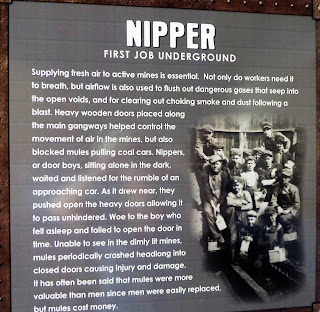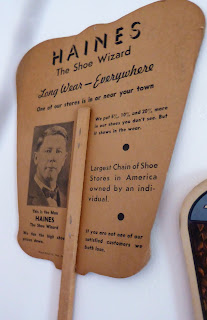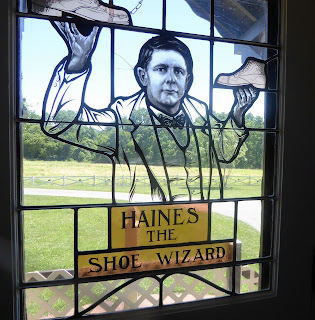A few years ago I took the time to do some research on the internet about "Pop" Kalina and found a miner's certificate from Moffat Coal. To this day I can't seem to locate it, so any recommendations on how to find it would be greatly appreciated.
Through the Pennsylvania Historical and Museum Commission (PHMC), I did find his name on a list of mining accidents. While working as a trackman's helper in his '40s, he was struck in the jaw when a bar slipped. Evidently, he advanced in his profession to become a full-fledged miner, certified to work with explosives only later in life. "Pop" Kalina, who arrived in this country with his bride Paulina, (yes, I got a laugh out of the fact that her first and last name rhyme, in the "Americanized" pronunciation), lived to be 86 years old. The man who toiled in the damp, dark, recesses of the earth for many years, was, by accounts, hale and hearty (as they would say in the old days), and managed to escape the perils of black lung--a condition that struck down so many of those who worked in his profession.
 |
| Me and "Pop" Back in the Day |
When an editor asked me to visit the Scranton region for an upcoming article, I decided to take advantage of the opportunity to learn more about Ignatz and what it was like to live the life of a coal miner.
The first stop on my path to discovery was Eckley Miners' Village. This fine example of a typical coal "patch town" tells a story of how the miners lived when coal was king. Located a bit off the beaten path in Weatherly, Pennsylvania, the "ghost town" is now maintained by the PHMC as a historical site dedicated to educating the public about coal-mining life.
Those who thought mining paid well for the era might be interested to know that many were forced to shop at the "company store" for goods sold at elevated prices. Suddenly the old Tennessee Ernie Ford song seemed to make sense.
Outside, visitors can stroll the Eckley area with a docent, or drive through the village. The planned community was arranged by social status from east to west. Miners and their families lived on the east side in double homes and engineers lived farther west in single-family homes. The mine owner resided farthest west at the opposite end of town.
Pic. 1: Main Street in Eckley
Pic. 2: Presbyterian Church circa 1854
Pic. 3: Double Home in which coal miners raised their families
Pic. 4: A 1968 re-creation of a Breaker which stood near the site of one of the three original breakers.
In 1970, Hollywood came calling and a cast and crew arrived in Weatherly to film "The Molly Maguires," a gritty movie based on a true story about Irish coal miners and corporate exploitation.The visit to Eckley was insightful and I was ready to learn more at the Lackawanna County Coal mine where my great-grandfather used to work as an employee of Moffat Coal. I can't help but admit it was a bit of a thrill to walk the same path he walked oh so many years ago. Tours are offered between April 1 and November 1 and are conducted frequently throughout the day.
After we parked in the ample lot, we walked a few minutes to the main center where staff provided us with tickets, a hair net and a hard hat. We were then invited to watch a short film about coal mining and browse the small gift shop while waiting the call for the tour to start.
When it was our turn, we joined about 25 others and piled into a bright yellow car to make our descent into the mine. I have to say I had a few butterflies plunging slowly down that deep hill into darkness, but hey, I'm supposedly built of good stock, so I stuffed that down and sucked it up. When we arrived at the bottom and were permitted to exit the car, I breathed a sigh of relief.
 |
| Our descent into the mine |
We also learned that mine workers had to always be on guard, especially for electrocution hazards. Our guide relayed a story about a mule whose ear touched a wire and he was struck dead on the spot, landing on the damp ground with a sickening thud. Perhaps this is why earwear like this was eventually employed. This picture of a mule hate was taken at the Anthracite Heritage Museum.
 |
| A mule hat to protect the mules from being accidentally electrocuted |
 |
| A miner and his mule |
























































